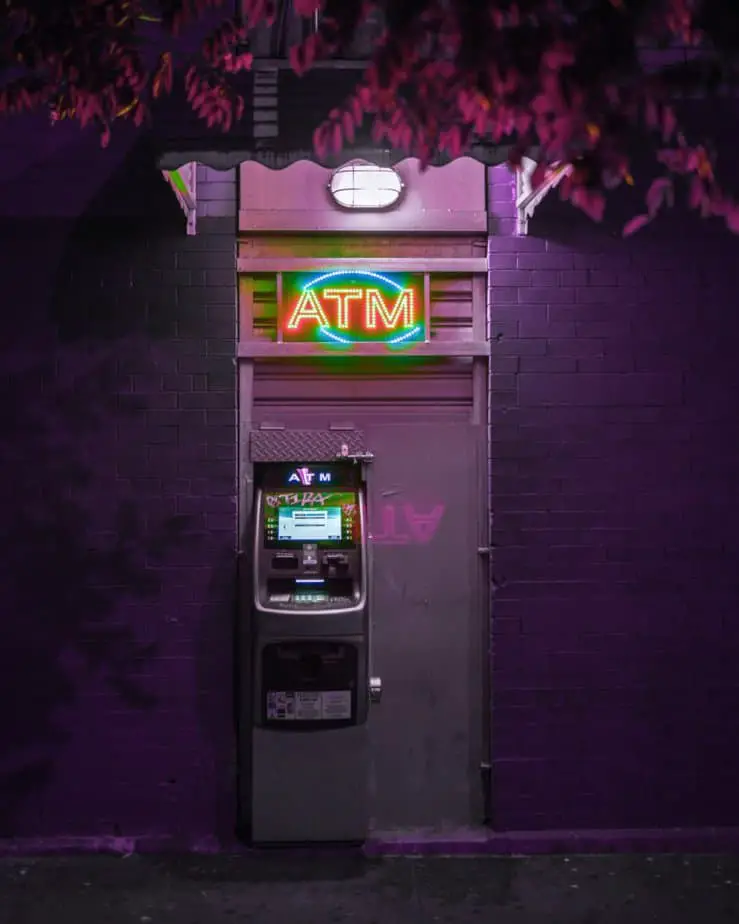On average, each overdrawn transaction costs about $35 a pop. However, overdrawing on your debit card more than once continues to incur a $35 charge. If you overdraw five times, you earn a $175 fee. Meanwhile, if you sign up for the overdraft protection program, you can make the same withdrawal but for a single charge of $35. It is also worth noting that your bank reserves the right to let you overdraw. This means that you may have withdrawn money from the account last time, but that doesn’t mean it could work in the future.
Can you overdraft at an ATM if you have no money?
It is pretty easy to withdraw from an ATM on a negative balance – we all have bad days, but only if you have signed in with the ATM overdraft protection program at your bank; if you haven’t, expect your bank to automatically decline your request for overdraft withdrawal at any ATM unless you sign up and accept the fees that come with using an ATM to get cast without having enough money in your account.
Before 2010, banks could levy overdraft charges on cash withdrawals, but under Federal Reserve Board guidelines that took effect on July 1st, 2010, you must agree to ATM overdraft protection. Imagine this as a small short-term loan. ATMs that enable overdrafts to allow you to withdraw money even if you do not have the money in the account. Many card issuers will allow you to do this, and there will normally be (large) costs.
To enable your bank to overdraft, you must enroll in an “overdraft protection” program. This implies you’ll give your bank or card provider permission to exceed your cash withdrawals. Most customers get this service activated, but many do not recall being asked to opt-in, according to a poll. This adds to the billions of dollars produced by overdraft fees, with a 65% increase in fees paid following COVID-19 lows.
How much are ATM withdrawal overdraft fees?
Overdraft fees at ATMs differ from one bank to the next. They were usually around $35. However, some banks have decreased or abolished overdraft costs for modest sums—for example, Chase’s new overdraft policy allows for little or no overdraft charges up to $50 and no overdraft fees on transfers under $5. If you need cash and have elected to pay the overdraft charge at an ATM, you could be better off getting out much more money than you feel you’ll need to avoid fines, as long as you have a clear plan for paying back the money fast.
When withdrawing cash from an ATM, you must usually agree to pay an overdraft charge. Before withdrawing cash from one of Bank of America’s ATMs, for example, you’ll be asked to authorize an overdraft transaction. You might not be informed about the overdraft fee if you use an ATM from a different bank or service provider.
What is the daily limit on ATM overdrafts?
There are no established limitations on how much you may overdraft at an ATM. These sums differ from one banking institution to the next and are frequently customized for each account customer. Another issue is whether you’re utilizing an ATM controlled by your bank or one owned by a different commercial bank. You may be able to overdraft solely at your bank’s ATMs.
New account holders and those with weak credit ratings are typically limited in the amount of money they may overdraft their accounts (generally between $100 and $300). Overdrafts of up to $1,000 are frequently permitted for more established persons with higher credit ratings. Even if you inquire about your bank’s policies, they will not be able to provide you with overdraft statistics until you go along with them and complete the paperwork. If you use an ATM at a different bank, the regulations for overdrawing are probably different and not as generous as your banks. Non-bank members are not permitted overdrafts at certain banking firms, while overdrafts are limited to lesser amounts at others.
Conclusion
As we said at the beginning go this article, it is possible for you to overdraft money from an ATM; however, only under certain conditions. ATM overdrafts give additional cash when you need it, but you must keep track of the steep costs to prevent slipping further into debt. It is simple to manage your money, pay your bills, and handle your financial obligations online in 2022, but cash remains king. Take advantage of the overdrafts but only when you need to.
Is it true that an ATM overdraft harms your credit score?
In most cases, an ATM overdraft has no negative influence on your credit score. It keeps it from getting a black mark for having an item with inadequate funds.
What banks let you overdraft at an ATM?
Bank of America BB&T BBVA Compass BMO Harris Bank Capital One 360 Charles Schwab Chase Citi Citizen’s Bank Fifth Third Bank HSBC Bank
How to avoid overdrawing your checking account by topping up your account?
Use overdrafts to withdraw funds you don’t have, incur a charge, and repay both the overdraft and the overdraft fee as soon as possible.
